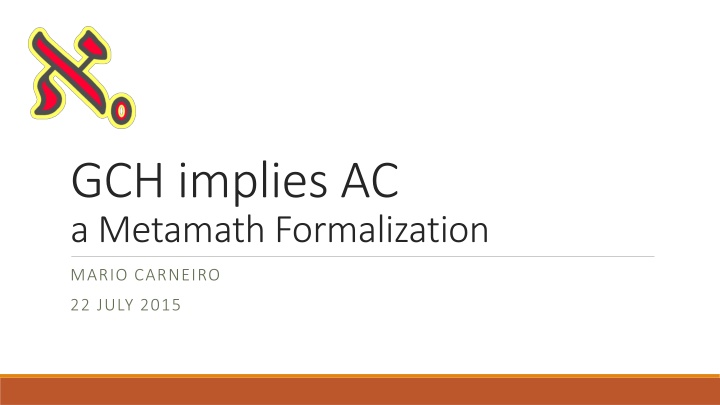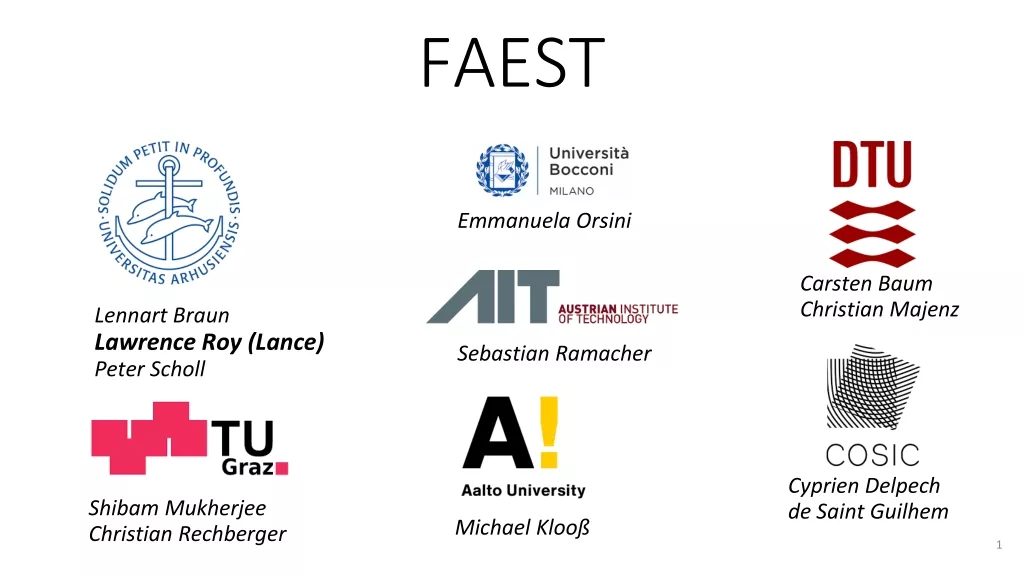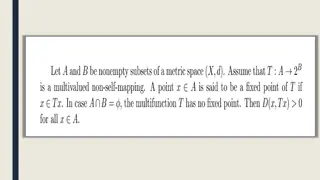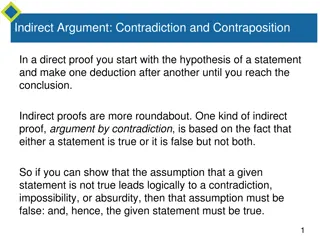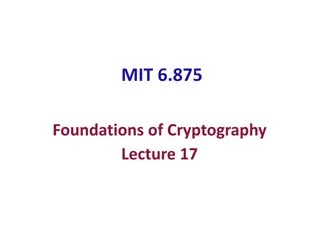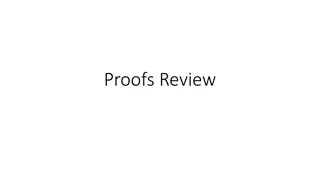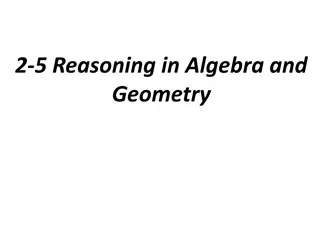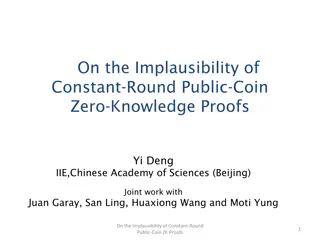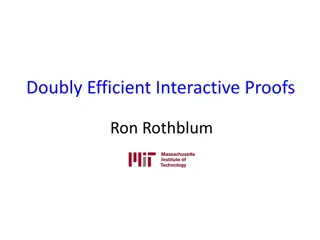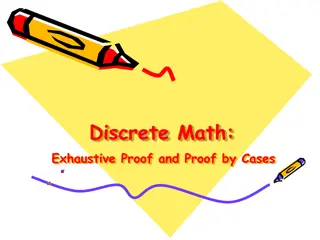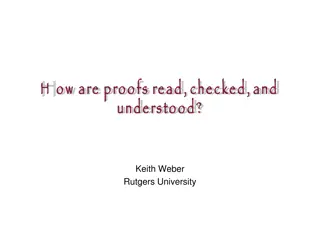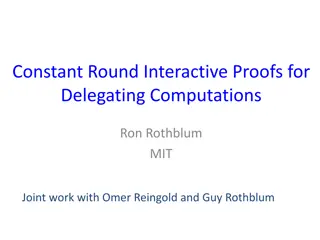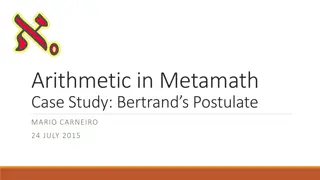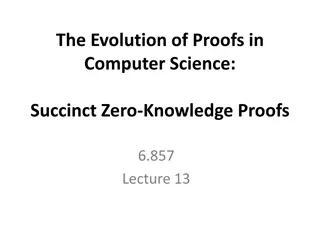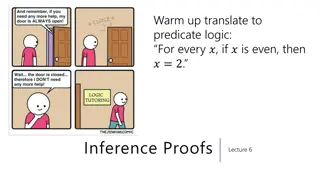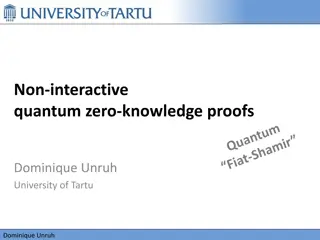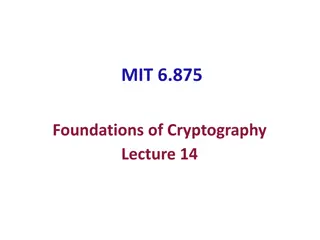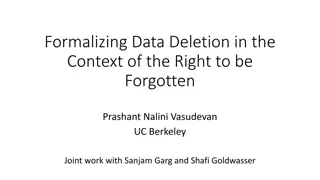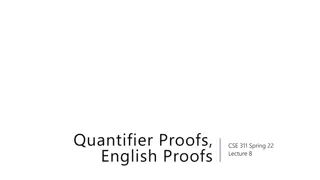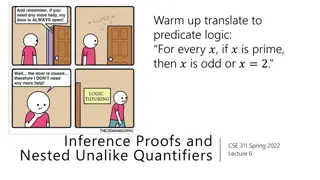Metamath: A Powerful Tool for Formalizing Mathematical Proofs
Metamath is a computer language that enables the representation of mathematical proofs through a simple foundation. This language has multiple verifiers and databases, making it a comprehensive tool for formalizing modern mathematics. Explore the concepts of Generalized Continuum Hypothesis (GCH), Axiom of Choice (AC), and their implications on the formalization of mathematical theories. Dive into the localizing aspects of GCH and its relationship with AC, supported by detailed examples and resources for further study.
Download Presentation

Please find below an Image/Link to download the presentation.
The content on the website is provided AS IS for your information and personal use only. It may not be sold, licensed, or shared on other websites without obtaining consent from the author.If you encounter any issues during the download, it is possible that the publisher has removed the file from their server.
You are allowed to download the files provided on this website for personal or commercial use, subject to the condition that they are used lawfully. All files are the property of their respective owners.
The content on the website is provided AS IS for your information and personal use only. It may not be sold, licensed, or shared on other websites without obtaining consent from the author.
E N D
Presentation Transcript
GCH implies AC a Metamath Formalization MARIO CARNEIRO 22 JULY 2015
What is Metamath? A computer language for representing mathematical proofs The Metamath spec is two pages, one verifier exists in 300 lines of Python Eight independent verifiers exist in eight different languages Two proof assistants (MM-PA and mmj2) with another (smm) in development A project to formalize modern mathematics from a simple foundation Four major databases ZFC set theory (set.mm) Over 25000 proofs, 500K lines, 24M file HOL type theory (hol.mm) Intuitionistic logic (iset.mm) NF set theory (nf.mm) Including Specker s proof of AC
What is GCH? The Generalized Continuum Hypothesis 2 ?= ?+1for every ordinal ? There are no infinite cardinals ? < ? < 2? 1) 2) Equivalence of (1) and (2) needs the axiom of regularity, which we prefer to avoid when possible we use definition (2)
Localizing GCH The Generalized Continuum Hypothesis 2 ?= ?+1for every ordinal ? There are no infinite cardinals ? < ? < 2? 1) 2) Equivalence of (1) and (2) needs the axiom of regularity, which we prefer to avoid when possible we use definition (2) Define a GCH-set to be a cardinal ? that is finite or satisfies ? < ? < 2?for all cardinals ? Often written CH ? , Metamath notation is ? GCH Then GCH is equivalent to every set is a GCH-set , written GCH = V GCH = Fin ? ? ? ? ? ??
What is AC? The Axiom of Choice Many equivalent formulations The one useful to us is every set is well-orderable/equinumerous to an ordinal Metamath notation for ? is well-orderable is ? domcard because the cardinality function is only defined on sets equinumerous to an ordinal CHOICE domcard = V
GCH implies AC Written in Metamath notation as GCH = V CHOICE What does a local version look like? Specker (1954): If ? is infinite and CH ? , CH 2?, then 2?= ? , so ? is well-orderable ? is the Hartogs number of ?, the set of all ordinals ? har = ? ? On ? ? Metamath version (completed 31 May 2015): ? ? ? GCH ? ? GCH har ? ? ? The source for this work was Does GCH imply AC locally? by Akihiro Kanamori and David Pincus (2002) http://math.bu.edu/people/aki/7.pdf http://math.bu.edu/people/aki/7.pdf Aside: Not many formal systems could even state this theorem (HOL too weak, Mizar too strong)
GCH implies AC http://us.metamath.org/mpegif/gchhar.html
Canonical Constructions Specker s proof (via Kanamori & Pincus) uses the lemma that CH ? implies ? + ? = ?2= ? If it were not the case, then 2? ?2 Seq ? where Seq ? is the set of finite sequences Halbeisen & Shelah (1994): If ? ? then 2? Seq ? Requires a bijection (or at least an injection) ??:Seq ? ? For infinite, well-orderable ?, we have |?| = |Seq ? |; in fact, to every infinite well-ordering of a set ? we can canonically associate a bijection between ? and Seq ? . Kanamori & Pincus This is the sort of thing that makes a formalizer s job hard! This bijection is Corollary 3 of Halbeisen & Shelah: Proof: Use the Cantor Normal Form Theorem, Corollary 2, order the finite subsets of ? and then use the Cantor-Bernstein Theorem.
Cantor Normal Form Textbook version: Every ordinal number ? can be uniquely written as ??1?1+ ??2?2+ + ?????, where ? is a natural number, ?1,?2, ,??are positive integers, and ?1> ?2> > ?? 0 are ordinal numbers. (Wikipedia) cantnf Metamath version (cantnf): Define the map CNF?,?from the set ?Fin ordinal exponential ??as CNF?,?? = ? supp ???? ? . Then CNF?,?is a bijection, and in fact an order isomorphism from (?Fin maximal ? with ? ? ? ? satisfies ? ? < ? ? ). It is easier for us to work with finitely supported function spaces than parallel sequences ? of finitely supported functions ?:? ? to the ?, ) to (??, ) (where ? ? when ? ? and the
Reversing Cantor Normal Form Corollary 2 of Halbeisen & Shelah If ? = ??1?1+ ??2?2+ + ?????, then defining ? = ?????+ + ??2?2+ ??1?1, ? ? Ordinal absorption laws: ? + ? = ? when ? < ?? ? ???= ??when 0 < ? < ? and 0 < ? Ordinal equinumerosity laws: ? + ? ? ? ? + ? ?? ? ? ?? ? ??(Cantor normal form), so ? ? and ? ? implies ?? ? ? ?Fin Important: all equinumerosity relations here are canonical ? ? here actually means ?:? ? is a bijection where ? is some complicated term
Reversing Cantor Normal Form Corollary 2 of Halbeisen & Shelah If ? = ??1?1+ ??2?2+ + ?????, then defining ? = ?????+ + ??2?2+ ??1?1, ? ? Ordinal absorption laws: ? + ? = ? when ? < ?? ? ???= ??when 0 < ? < ? and 0 < ? The ordinal absorption laws imply ? ? = ????? ?????= ???, so every ordinal is (definably) equinumerous to a power of ?
? ? ?, definably ? ? ?? ?? ??2 ?2?= ?2 ? ?? ? The real proof uses definable bijections instead of equinumerosity (existence of a bijection) Compare:
? ? ?, definably ? ? ?? ?? ??2 ?2?= ?2 ? ?? ? The real proof uses definable bijections instead of equinumerosity (existence of a bijection) We can use this to construct an injection from Seq ? ? by recursion, given a bijection ?:? ? ?: ? = ? 0,0 ? ?1,?2, ,?? = ? ?,? ? ?1,?2, ,?? 1 ,??
The de Bruijn Factor The de Bruijn factor is the quotient of the size of a formalization of a mathematical text and the size of its informal original (Wiedijk) Because this project was principally the near-complete formalization of a single text (Kanamori & Pincus), it is possible to calculate a de Bruijn factor for the work Because the TeX for Kanamori & Pincus was not available, Google OCR of the PDF was used instead, which may make the calculated factors higher than they should be since some formatting was lost Metamath has a surprisingly low de Bruijn factor! (Compare intrinsic factors 3.1, 3.7, 4.1 from [Wiedijk]) Why? informal formal de Bruijn Factor uncompressed 18092 60106 apparent 3.32 compressed 7545 19579 intrinsic 2.59
